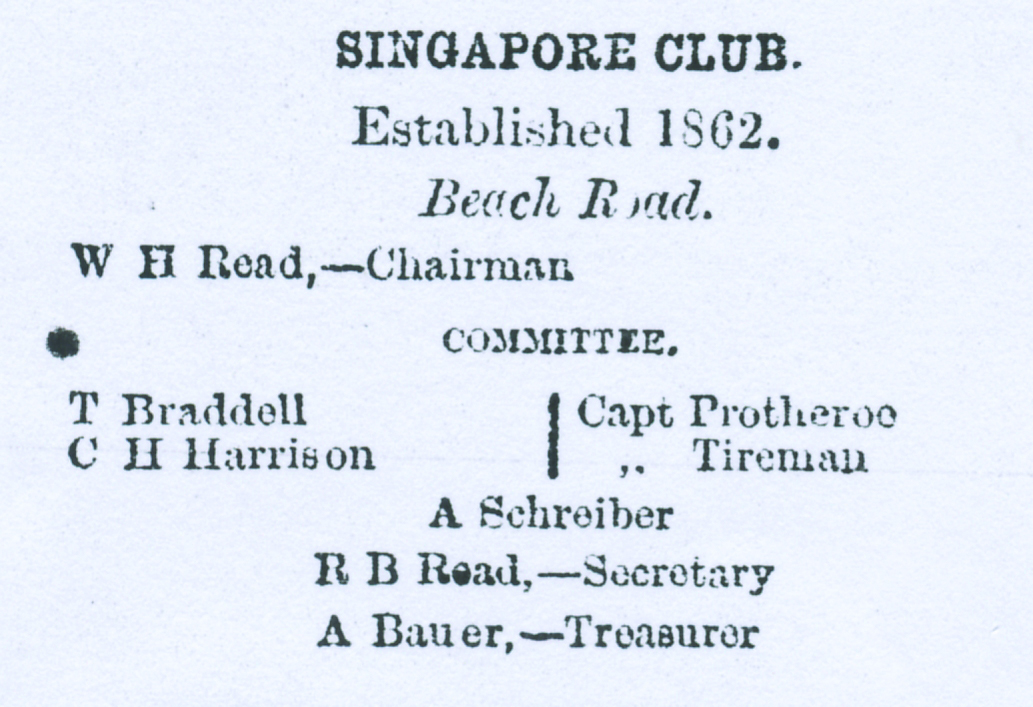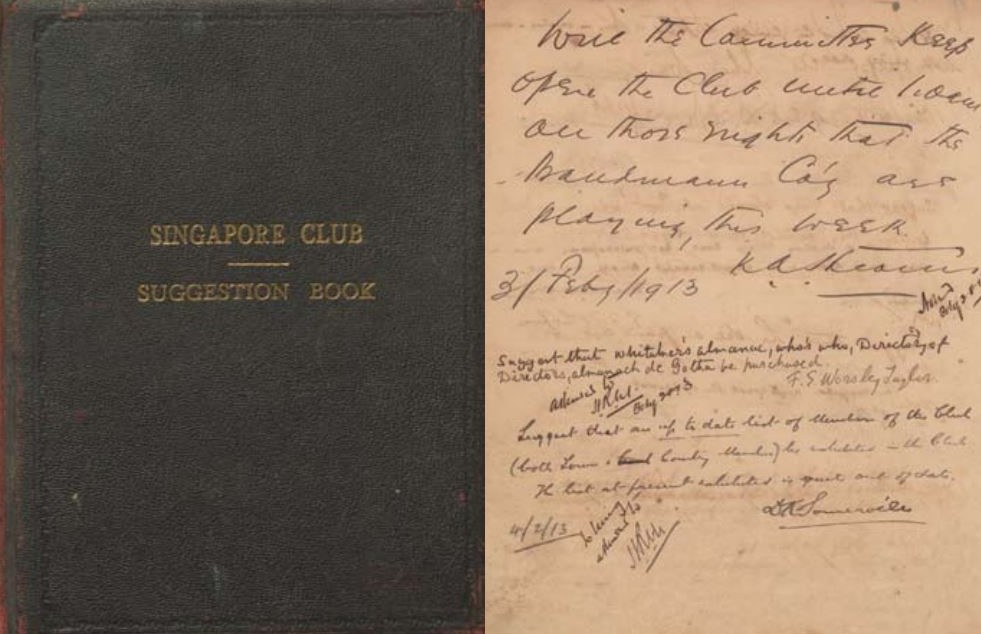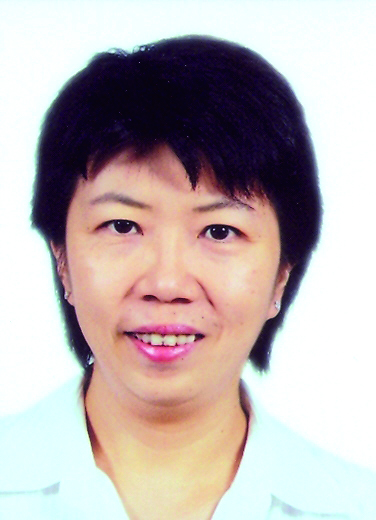Singapore Town Club Collection
Senior Librarian Eunice Low highlights heritage items recently acquired by the National Library Board from the Singapore Town Club, including photographs, portraits, sketches and war memorabilia.

The National Library recently acquired heritage items belonging to Singapore Town Club, which includes photographs, portraits, sketches and war memorabilia. The Singapore Club, later known as the Town Club and then the Singapore Town Club, was founded in 1862 by William Henry McLeod Read (W.H. Read). Read came to Singapore in 1841 to take over his father’s business and in the next 60 years became an integral part of Singapore society. A Municipal Commissioner, member of the Legislative Council and Justice of the Peace, he also founded the Singapore Sporting Club, the precursor to the present Singapore Turf Club, and was a trustee of the Singapore Institution. When he passed away in 1909, the Straits Times published an obituary hailing him as the “Father of the Colony” and “Nestor of Singapore and the Straits”. The premises of the Singapore Club were located in the Exchange Buildings within the hub of commercial activity in Singapore. Arnold Wright, author of Twentieth Century Impressions of British Malaya (1908), notes that it was the “premier club in the settlement”. Membership was limited to top civil servants, merchants and professionals including lawyers and doctors.
One of the highlights of the collection is a guest book of the Singapore Club. It contains members’ suggestions and comments on the Club’s facilities and services. The earliest entry is dated 3 May 1911 and the book was opened until January 1942. (The Singapore Club was taken over during the Japanese Occupation where it served as the offices of the Japanese Imperial Army.) The original suggestion book was sent for restoration in London after the war and only reopened for members’ suggestions in 1963.

The entries offer an interesting record of the social life, manners and customs of prominent Singapore residents in the early to mid-20th century. For example, some entries make reference to historical events. An entry dated 12 December 1911 and signed by seven members, suggests that the staff of the Singapore Club “be made to bear some head-dress now that they have removed their Towchangs”, referring to events where supporters of the Chinese Revolution in Singapore and Malaya had discarded their towchangs (queues or pigtails). In another entry, dated 28 July 1964, C.J. Stanbury, then Director of British Information Services, makes reference to the 1964 racial riots in Singapore: “I wish to put on the record the praiseworthy behaviour of the Head Boy and the other staff during the racial disturbances which started on July 21. Although obviously very worried about their families and homes, they carried out their club duties with invariable politeness, efficiency and… at the height of the rioting did their best for those few members, such as myself, who had to be in the neighbourhood, and who, in consequence, found the continuing availability of the Club facilities a great boon.” In addition, the entries provide a primary record of prominent 20th century personalities. Names include Peter Fowlie, a Municipal Commissioner, R.O. Winstedt, President of Raffles College and member of the Straits Settlements Legislative Council; William Makepeace, owner of the Singapore Free Press and co-author of 100 Years of Singapore; Rowland Allen, founder of Singapore law firm, Allen & Gledhill LLP; Edwin A. Brown, Municipal Councillor and Chief Commissioner of Scouts; and G.K.R. Mugliston, a prominent sportsman.
Other items of notable interest are two sets of photographs taken of Singapore Town from the spire of St Andrew’s Cathedral. These photographs are a well-arranged composite of several smaller photographs and afford a comparative view of almost one hundred years of development of the town.
This collection will complement other significant National Library collections of early and pre-independent Singapore and will be made available through the National Library website (https://www.nlb.gov.sg/main/home) and at the Donors Gallery, Level 10, Lee Kong Chian Reference Library, National Library Building.
The National Library is interested in receiving donations of heritage materials – both published and unpublished – on Singapore and Southeast Asia that will help enhance the Library’s collections. These could include manuscripts, photographs, genealogical records, documents, letters as well as materials printed during the Japanese Occupation (1942–45) or earlier. If you have a collection you wish to donate to the National Library, please email https://www.nlb.gov.sg/main/visit-us/our-libraries-and-locations/libraries/national-library-singapore.

Senior Librarian
Heritage Department Collection
National Library

